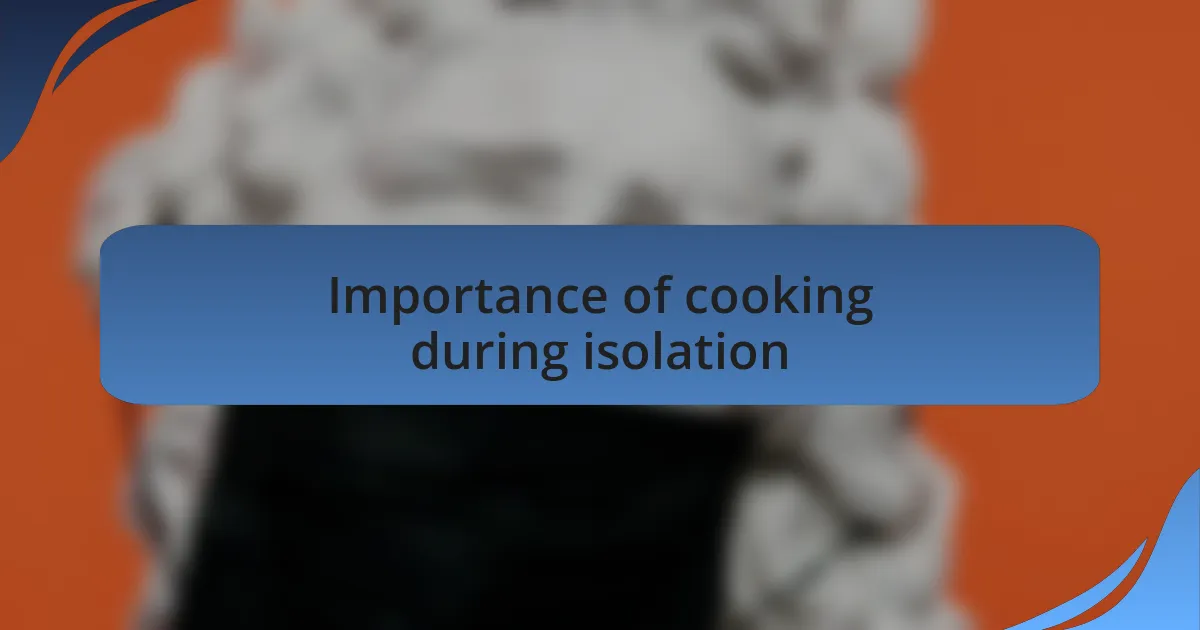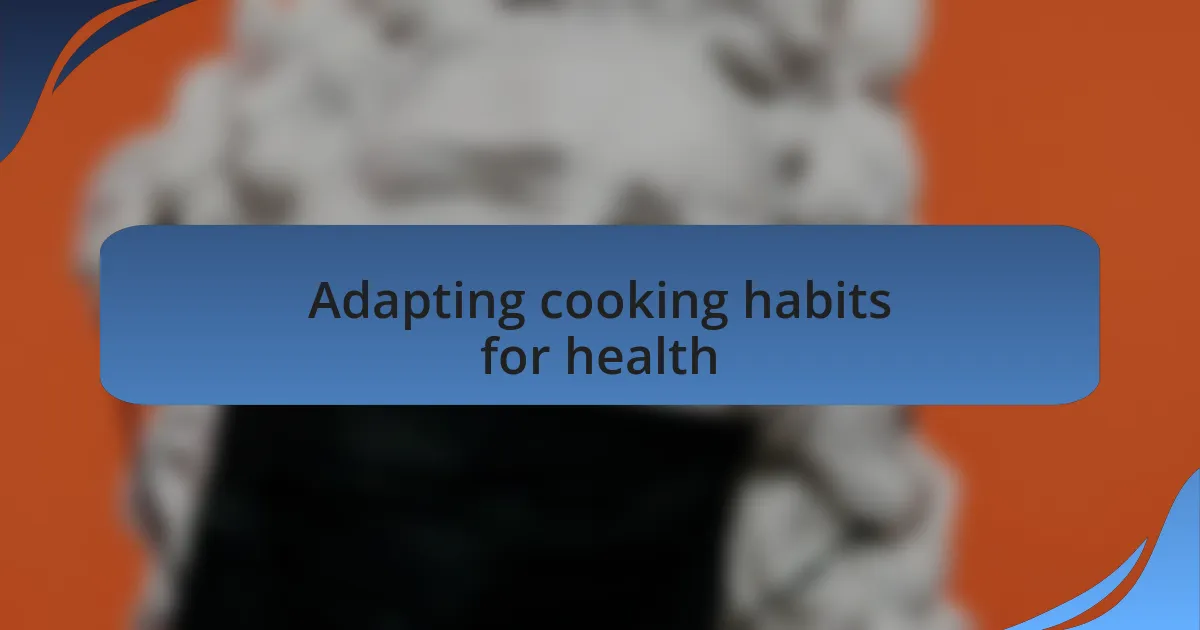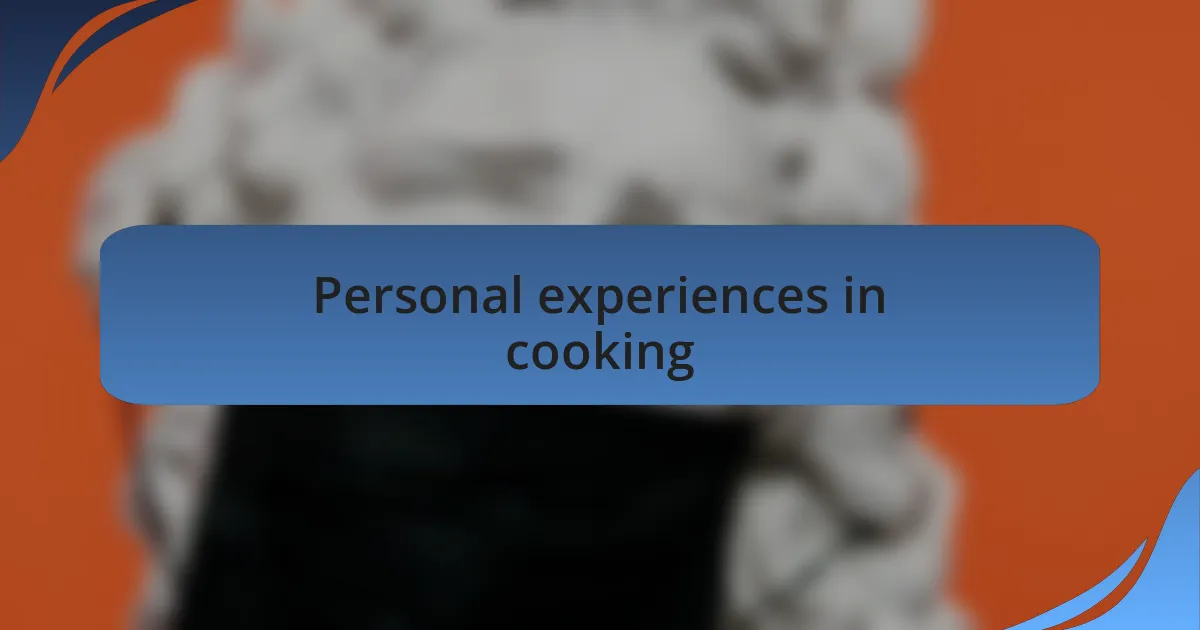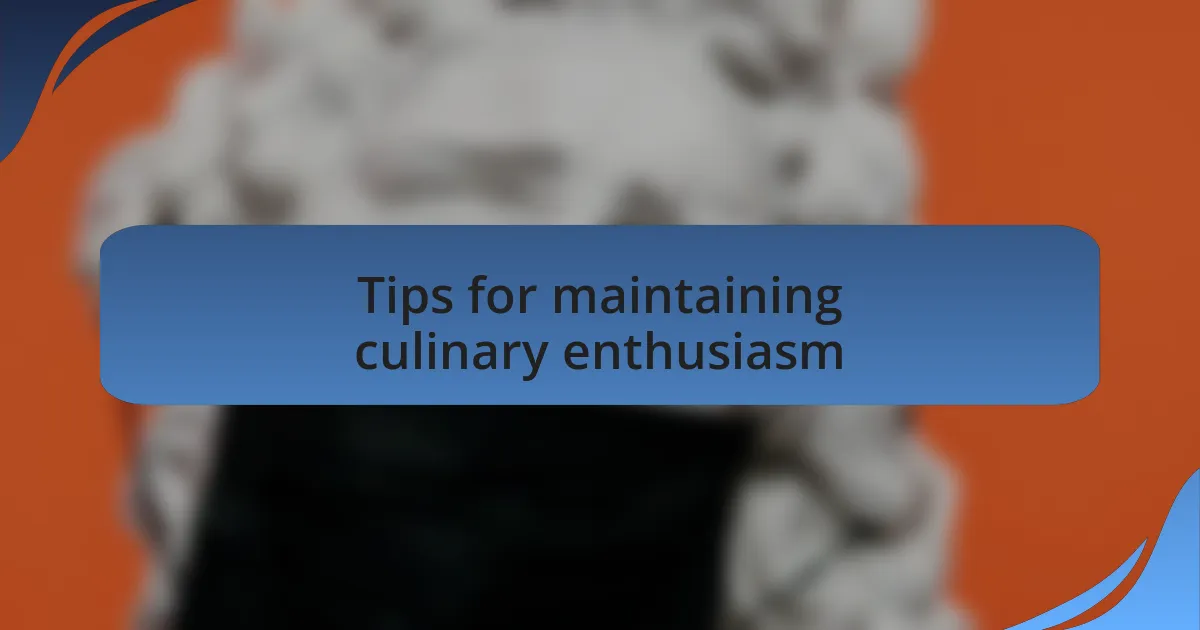Key takeaways:
- Cooking during isolation served as a meditative and creative outlet, helping to maintain emotional wellbeing through connection and self-care.
- Adapting cooking habits for health involved prioritizing nutrition, meal prepping, and incorporating more plant-based options for better physical health.
- Exploring new recipes and managing pantry staples effectively encouraged creativity and resourcefulness, transforming cooking into a rewarding adventure.
- Engaging in themed cooking nights and virtual cooking challenges fostered social connections and kept culinary enthusiasm alive during isolation.

Understanding Covid wellbeing
Understanding Covid wellbeing extends beyond physical health; it encompasses mental and emotional resilience. During the isolation phase, I often found myself questioning how to nurture my own wellbeing when the world felt so uncertain. I recall moments spent in my kitchen, transforming simple meals into comforting rituals, and it struck me: how can something as basic as cooking foster a sense of control and normalcy?
I’ve learned that Covid wellbeing involves recognizing the importance of self-care and connection. When social interactions dwindled, I began hosting virtual dinner parties with friends. These shared meals, though digitized, brought warmth and laughter into my home, showing me that wellbeing isn’t solely about being physically present with others—it’s also about maintaining bonds through creativity and communication.
As I adapted my cooking routines, I also discovered more about my emotional triggers related to food. Have you ever noticed how certain flavors can evoke memories? I experimented with spices that reminded me of family gatherings, which not only nourished my body but also soothed my soul. By understanding our behaviours and emotions linked to cooking, we can better navigate the complexities of Covid wellbeing and foster a deeper connection with ourselves and others.

Importance of cooking during isolation
Cooking during isolation provided me a vital lifeline. I remember the first time I baked bread when the pandemic started—it wasn’t just about making something to eat. The smell of yeast and warm, rising dough filled my empty kitchen and, for a moment, transported me to simpler days, reminding me of my grandmother’s kitchen. Have you ever experienced the magic of creating something with your own hands? It really can lift your spirits.
As I spent more time in the kitchen, cooking became a meditative process. Chopping vegetables and stirring sauces became an outlet for my anxiety—I found peace in the rhythm of cooking. Every meal turned into an opportunity for creativity. I could experiment with ingredients I had on hand, turning leftovers into exciting new dishes. It made me feel resourceful and engaged in a way that scrolling through social media never could.
Moreover, preparing meals was also a way to connect with loved ones. I started sharing my recipes and cooking tips through texts and video calls. It was heartwarming to receive photos of their own culinary creations, reminding us that we were still together, albeit miles apart. Cooking transformed from a mere necessity to a vehicle for connection during these isolating times, demonstrating the profound impact it can have on our emotional wellbeing.

Adapting cooking habits for health
Adapting my cooking habits for health was a journey that I found both challenging and rewarding. Early on, I realized I needed to prioritize nutrition more than ever, given the uncertainties of the outside world. I started researching healthy recipes, swapping out refined ingredients for whole foods. Have you ever tasted the difference between homemade versus store-bought sauces? It’s remarkable how much more vibrant flavors can be when using fresh, wholesome ingredients.
I also began to see meal prepping as an act of self-care. Each Sunday, I would carve out a few hours to plan and prepare my meals for the week. This not only saved me time but also ensured that I always had nourishing options available. I vividly remember the satisfaction of opening my fridge and seeing colorful containers filled with fresh salads, quinoa bowls, or hearty soups—all ready for me to enjoy. Isn’t it comforting to know that a healthy meal is just a microwave away?
One of the most impactful changes was incorporating more plant-based meals into my diet. I found that experimenting with different types of vegetables and legumes not only broadened my palate but also aligned with my health goals. I recall the excitement of transforming a simple can of chickpeas into a delicious curry or roasting seasonal vegetables to highlight their natural sweetness. It made me wonder: how often do we overlook the health benefits of simple, wholesome ingredients? In my experience, these small tweaks not only improved my physical health but also enriched my cooking experience overall.

Exploring new recipes for variety
Exploring new recipes became a delightful adventure during isolation. Each day felt like a blank canvas in the kitchen, waiting for me to add splashes of creativity. One afternoon, I stumbled upon a recipe for homemade pasta; the idea of creating something from scratch ignited a spark in me. Have you ever savored that first bite of warm, freshly made noodles? It’s a whole different experience than the packaged variety.
I vividly remember the joy of diving into global cuisines. While flipping through cookbooks, I discovered flavors from distant lands right in my home. Experimenting with a Moroccan tagine infused my kitchen with the warmth of cumin and cinnamon. I can still picture the vibrant colors and fragrant aroma wafting through my home. Isn’t it fascinating how food can transport us to another place, even in the confines of our own kitchen?
As I ventured into this culinary exploration, I found myself developing a taste for combining unexpected ingredients. One evening, I decided to mix sweet potatoes with black beans and a hint of lime, crafting a dish that was both unexpected and comforting. I remember the surprised look on my partner’s face as he tasted it, followed by a huge smile. How incredible it is to create meals that turn into joyous moments at the dinner table!

Managing pantry staples effectively
Managing pantry staples effectively is an art I had to master during isolation. With grocery runs limited, I quickly learned to prioritize what I had, making sure to use perishable items first and saving non-perishables for later. There’s something oddly satisfying about strategically planning meals around those cans of chickpeas I once ignored. Have you ever felt a sense of accomplishment from turning basic ingredients into delightful dishes?
As I dug deeper into my pantry, I found forgotten treasures – a stash of dried herbs and spices that transformed my cooking. One evening, I decided to whip up a simple rice dish but added a pinch of smoked paprika and crushed garlic powder for an unexpected twist. The moment those flavors melded together, it reminded me of how little things can elevate a meal. Isn’t it amazing how a dash of creativity can breathe new life into mundane staples?
I began creating a system for my pantry, labeling jars and grouping similar items. This not only organized my space but also sparked my imagination; seeing ingredients together often led to new recipe ideas. I still remember the thrill when I turned an overlooked bag of lentils and some wilted greens into a hearty soup that warmed my heart and nourished my soul. Isn’t it rewarding to know you can create something wonderful from what you already have?

Personal experiences in cooking
Exploring new recipes became a daily adventure for me during isolation. I remember one rainy afternoon when I stumbled upon a recipe for homemade pasta. With a bit of hesitation and a good amount of flour dust, I rolled up my sleeves, and to my surprise, the dough came together beautifully. Have you ever found joy in the simplicity of creating something from scratch?
Experimenting with international flavors was another highlight of my cooking journey. One evening, out of sheer whim, I decided to try my hand at a Thai curry using whatever vegetables were lingering in my fridge. The aroma that filled my kitchen was intoxicating, and that first spoonful of the spicy, creamy mix was a reminder of the vibrant meals I once enjoyed in restaurants. Isn’t it fascinating how food can transport you back to special moments, even when you’re at home?
There were times when my culinary experiments didn’t go as planned, but those moments taught me resilience. I recall a failed attempt at a sourdough loaf that ended up more like a brick than bread. Instead of frustration, I found humor in my baking blunders, sharing my “masterpiece” with friends over video calls, and we laughed about our kitchen mishaps. Isn’t it liberating to embrace imperfections and turn them into shared experiences?

Tips for maintaining culinary enthusiasm
One effective way to maintain culinary enthusiasm is by setting themed cooking nights. I remember designating Fridays as “Fiesta Night,” where I would whip up tacos and guacamole while blasting mariachi music. It turned a simple meal into an event, and I couldn’t help but dance a little while cooking. Isn’t it amazing how just a change of atmosphere can transform your experience in the kitchen?
Another tip is to involve family or friends, even if it’s virtual. I organized a weekly cooking challenge with my friends, where we all made the same dish and shared our variations over video chat. It felt like a mini-reunion, and seeing everyone’s creations sparked a sense of friendly competition. Have you ever noticed how cooking together, even from a distance, can strengthen connections?
Don’t underestimate the power of plating! I started treating my meals like works of art, experimenting with how I presented my food. A simple bowl of stir-fried vegetables became a colorful display with the careful placement of ingredients. There’s something rewarding about creating a visually appealing dish that invites you to savor not just the flavors but the experience itself. Have you tried elevating your meals just by changing how you serve them?